 A survey carried out by researchers from the Institute of Psychology in Johannes Gutenberg University at Mainz, Germany indicates that the light setting of a room can influence how wine tastes. A number of sub-surveys were performed involving around 500 volunteers who were asked about their opinions regarding the taste of certain wines and the amount they would willingly pay for them.
It was determined that a certain wine tasted better under blue or red ambient light instead of white or green light. The participants were even prepared to pay an extra Euro for a certain Riesling bottle when offered under red light instead of green.
“It is already known that the colour of a drink can influence the way we taste it,” states Dr Daniel Oberfeld-Twistel of the General Experimental Psychology division. “We wanted to know whether background lighting, for example in a restaurant, makes a difference as well”. The survey revealed that, among other matters, the test wine was found to be almost 1.5 times sweeter under red light than under green or white light. The fruitiness of the wine also has the highest rating when under red light.
With these results, the researchers concluded that the colour of the lighting of a room can influence wine’s taste, even when no direct effect was made on the drink’s colour. “The extreme lighting conditions found in some bars can undoubtedly influence the way a wine tastes,” assumes Oberfeld-Twistel. He additionally proposes that wine tasting must be conducted in a neutral-light coloured surrounding.
The researchers intend to conduct further studies to provide more insights regarding this interesting phenomenon.
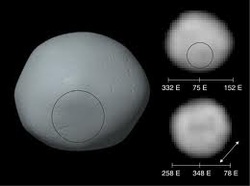 A doctoral student from the University of California has confirmed that Pallas, an asteroid lying between the orbits of mars and Jupiter, is actually a proto-planet.
Britney E. Schmidt of the Department of Earth and Space Sciences made the confirmation after studying Pallas' first high-resolution images taken using the Hubble Space Telescope. She said that Pallas is an intact proto-planet just like Vesta and Ceres, its sister asteroids.
Schmidts believes that the asteroid has been intact since the formation of the solar system some millions of years ago. She has expressed her excitement about the "new perspective on an object that is really interesting and hadn't been observed by Hubble at high resolution."
Schmidt said she and her team were not only trying to understand the asteroid itself, but also how the solar system was formed. She said that they consider large asteroids, such as Pallas, Vesta, and Ceres, "as a chance to look at planet formation frozen in time."
Hubble, in the past had tried to take pictures of Pallas but failed. It succeeded only in September 2007, giving Schmidt and her team a new understanding of the proto-planet. With the images, they were able to determine its actual shape and measure its size. They were also able to observe light and dark areas on its water-rich surface, which indicate the same internal change planets undergo.
Schmidt and her team also found a big impact site, which could explain why Pallas has a family of asteroids of its own. She said, "It's an interesting chance to almost look into the object, at the layer underneath. It's helping to unravel one of the big questions that we have about Pallas, why does it have this family.
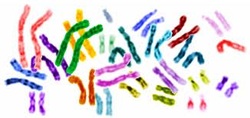 Despite their genetic likeness to humans, chimps and other primates have a maximum lifespan that hardly surpass 50 years. According to a USC Davis School of Gerontology professor, Caleb Finch, the difference is that humans have evolved genes that allow them to adjust to different levels of inflammation and infection and high levels of cholesterol in their mostly meat diets.
His study reveals that human’s genetic advantages, due to the slight variations on the sequencing of their DNA and the development of their diet, made humans exceptionally susceptible to ageing sicknesses like cancer, dementia and heart disease, than other primates.
“Over time, ingestion of red meat, particularly raw meat infected with parasites in the era before cooking, stimulates chronic inflammation that leads to some of the common diseases of ageing”, he said.
Humans also evolved the apolipoprotein E, a unique cholesterol carrying gene that regulates infection and other aging aspects in the arteries and the brain.
ApoE3, exclusively found in humans and called the ‘meat-adaptive gene’, is responsible for the increased lifespan of humans. However, apoE4, a minor allele, can damage neuronal development and may shorten lifespan if expressed in humans. Carriers of this allele have greater blood cholesterol, early attacks of Alzheimer’s and heart disease, and more oxidised lipids in the blood.
“The chimpanzee apoE functions more like the "good" apoE3, which contributes to low levels of heart disease and Alzheimer's”, stated Finch. Likewise, chimpanzees living in captivity have extraordinarily low risks of Alzheimer’s and heart disease during aging.
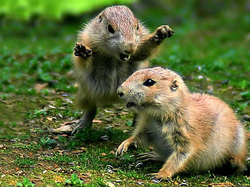 Tom Parker, a biology professor, has arrived at an unusual discovery. In the California shrubland and forests that burned up in 2008, Parker found Manzanita seedlings growing in dense clusters, indicating that the shrubs sprouted from underground seeds.
Every year, wildfires present Parker with new proof about how the native plants of California deal with extreme temperature. The professor currently spends evenings in the field, tracking down meadow voles, kangaroo rats and mice, which he thinks are stashing away seeds of Manzanita and helping the plants cope with fire conditions.
“We believe that rodents open up Manzanita's cherry-like fruit and bury the seeds found inside, similar to a squirrel hiding its nuts to eat later”, stated Parker, who specialises on Manzanita, a cluster of evergreen shrubs and trees. “What's critical is that they bury the seeds at a depth that the seeds can survive the heat if a fire breaks out”.
His experiments attract the rodents to containers of fruit and trace their footprints by means of fluorescent powder that is seen under with UV light. “We want to get the rodents to bury the seeds so we can see how many they are burying in one cache and how deep they are burying them”, said Parker.
He plans to imitate the distribution and depth of the seedlings in laboratory experiments to prove whether the stashes of rodents enhance the seeds’ survival rates.
“Sometimes plants develop survival strategies that use the help of animals, like bees pollinating flowers”, he explained. “If our hypothesis is correct, we'll show that contrary to popular belief, rodents are more of a help than a hindrance to Manzanita”.
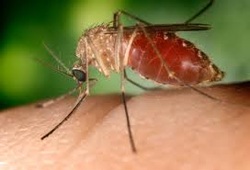 Researchers from the University of California in Davis have discovered the prevalent scent naturally produced by birds and humans, which draws in the blood-sucking Culex mosquitoes that carries the West Nile virus and other severe diseases.
The new study, published in the online issue of the Proceedings of the National Academy of Sciences, reveals why these blood-sucking insects changed hosts from fowls to humans and allows for greater advancement in disease management.
Walter Leal, an entomology professor, and Zain Syed, a postdoctoral researcher, discovered that nonanal is the dominant semiochemical that activates that insect’s sense of smell, leading them towards their hosts’ blood. A semiochemical is defined as a chemical mixture or substance that conveys messages.
“Nonanal is how they find us,” Leal stated. “The antennae of the Culex quinquefasciatus are highly developed to detect even extremely low concentrations of nonanal”. The mosquitoes detect scents with their antennae’s olfactory receptor neurons.
Birds, the primary hosts for mosquitoes, functions as the reservoir for the deadly West Nile virus, explained Leal. When virus carrying mosquitoes feed, they pass on the virus into their hosts, mostly birds, cats, dogs and humans.
Researchers from the UC Davis studied numerous compounds naturally produced by humans and birds. They gathered chemical scents from 16 adult human volunteers, representing various ethnic groups and races.
“We then determined the specificity and sensitivity of the olfactory receptor neurons to the isolated compounds on the antennae of the mosquitoes,” said Syed.
The researchers discovered that nonanal functions interactively with carbon dioxide, an identified mosquito attractant. "Nonanal, in combination with carbon dioxide, increased trap captures by more than 50 percent, compared to traps baited with carbon dioxide alone,” said Syed.
 Researchers from the University of Cambridge have found a way to erase ink from paper, making the paper reusable. Julian Allwood and Thomas Counsell have discovered that a certain mixture of solvents can remove toner print from paper, allowing the paper to be reused.
Although the pair admits that the concept isn’t new (mediaeval monks scraped parchments to remove print) and that there are already several patents trying to do the same, they said that existing techniques are still quite vague.
Allwood and Counsell have been studying print removal techniques since 2006. Their latest study demonstrates a new toner removal method, which utilises a certain solvent combination that can erase toner print without damaging the paper. The resulting paper; however, is not as white as a new one.
For their experiments, the researchers used one toner-paper combination. An HP 4200 black-and-white laser printer provided the toner, while the paper they used was uncoated, white, wood-free 80 gm-2 Canon copy paper. The researchers, after experimenting with a number of solvents and their combinations, found that using a mixture of 40% chloroform and 60% dimethylsulphoxide and ultrasound agitation could remove the toner and make the paper adequately usable. They have found that dimethylsulphoxide alone is not very effective in removing print, but it could produce white paper. On the other hand, chloroform can successfully remove print, but it produces greyish paper. When used in combination, the two produce an off-white paper with a surface slightly rougher than new paper but still very much reusable.
 A study of microfossils from oceanic core deposits reveals the environmental conditions that existed at high latitudes during an important era in Earth’s history.
At the start of the Eocene era around 55 million years ago, the poles of the Earth are said to have been devoid of ice. However, during the early Oligocene era 25 millions years later, Antarctica and Greenland developed ice sheets.
“This change from greenhouse to icehouse conditions resulted from decreasing greenhouse gas concentrations and changes in Earth's orbit”, said Dr Ian Harding from the University of Southampton’s Schools of Ocean and Earth Sciences. “However, the opening or closing of various marine gateways and shifts in ocean currents may also have influenced regional climate in polar high-latitudes”.
The parting of Greenland and Eurasia resulted in the fractional or complete immersion of prehistoric land barriers like the Vøring Plateau in the Norwegian continental border.
Harding and Dr James Eldrett, Harding’s former doctorate student, Dr James Eldrett, reconstructed the Vøring Plateau’s environmental conditions at this time by carefully studying the fossilised remnants of organic remains of dinoflagellates in sediment cores.
The evidences found in the sediment cores indicate the evolution of shallow marine habitats in the Vøring Plateau in the early Eocene. Nevertheless, the discovery of fossilised species suggests that northerly areas of the plateau and the top of the Vøring Escrapment were still above water level.
In the late Eocene, the sediments were only from planktons, indicating that the whole plateau has been submerged. This shows that marine links were formed between different Nordic sea basins earlier than previously thought.
 Wikipedia, a free online encyclopaedia, has denied allegations that it is currently losing participants. However, it has admitted that more work must be done to attract more contributors.
Wikipedia, the world’s fifth most famous web property, had 344 million visitors in October, according to figures released by comScore Media Metrix.
This week’s report in The Wall Street Journal, however, asserted that Wikipedia is losing large numbers of contributors who write articles.
According to the report, 49,000 editors had deserted the site in the first quarter of 2009, ten times higher than the 4,900 editors it lost in the 2008’s first quarter.
The paper then speculated on the causes of the huge loss, suggesting that contributors usually feel frustrated every time they were asked to debate the articles’ content over and over again.
Wikipedia, however, has asserted that the figures cited in the newspaper are not correct, because those were taken from a research that tracked when an editor starts and stops editing.
“It is impossible to make a determination that a person has left and will never edit again. There are methodological challenges with determining the long-term trend of joining and leaving”, the company said in a blog post.
“Studying the number of actual participants in a given month shows that Wikipedia participation as a whole has declined slightly from its peak two and a half years ago, and has remained stable since then”.
Wikipedia has approximately 14.4 million articles and thousands are being added each day, the company said.
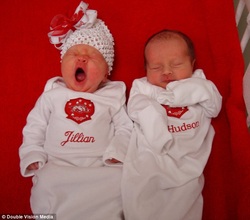 Julia Grovenberg, a resident of Fort Worth, Arkansas, was found to possibly be carrying two, non-twin babies, which are suspected to have been conceived more than two weeks apart. It is possible that the babies were conceived through superfetation, an uncommon condition in which a pregnant woman again ovulates and conceives.
Grovenburg knew that she was already carrying a baby girl, but during an examination, physicians found out that another smaller baby was developing alongside the said baby girl. Doctors believe that the smaller baby is a boy.
Dr M. Muyalert, Grovenburg’s physician, confirmed that her patient is indeed carrying two babies which have a huge disparity in size, and could have possibly been conceived by superfetation.
According to fertility expert Karen Boyle of Greater Baltimore Medical Centre, superfetation happens very rarely, but when it does, the second conception usually occurs at most 24 days later than the first. In many cases, the second baby has lung development problems. However, in Grovenburg’s case, the gap between the first and the second conception may have been short enough to avoid or minimise health concerns.
Dr Jeffrey Kuller, professor of gynaecology and obstetrics in Duke University Medical Centre, is sceptical whether the case is superfetation or not since the condition is so rare that there have only been a “handful” of recorded cases. Hormonal changes due to pregnancy normally stop ovulation from occurring, but it is not impossible.
 On Wednesday, a report from the Wall Street Journal stated that Google-owned YouTube is planning a rental service for streaming movies, which would be the video-sharing site’s first ever paid service.
According to sources privy to the details of the planned service, the Web site’s owners are holding talks with several major movie studios, such as Sony Corp., Warner Bros., and Lions Gate Entertainment Corp., regarding the distribution of newer releases to the public through rentals.
The ‘Wall Street Journal’ reported, "Negotiations are continuing and there are no guarantees a deal will be struck.”
YouTube is known worldwide for its collection of amateur videos uploaded and contributed by its users and members. The Web site already has the license to show full-length movies and screen clips on its site; however, there is no charge for any of the Web site’s services.
YouTube has recently signed a deal with the U.S. media and Time Warner to show movie clips from the Time Warner-owned company, Warner Bros., with the two companies splitting the advertising revenue.
The California-based advertising and Internet search company Google purchased YouTube in 2006; however, despite the Web site’s massive popularity worldwide, the company has not yet seen a return on its investment.
Though the ongoing agreements may vary depending on the studio, the deal generally gives YouTube the right to exact fees from its consumers for renting out stream movies.
The newspaper said, "In some cases, these titles might be available on the site on the same day that they come out on DVD.” The Web site plans to charge consumers $3.99 for each new movie rental, the same price Apple bills its users for movie rentals through its iTunes service.
|










 RSS Feed
RSS Feed